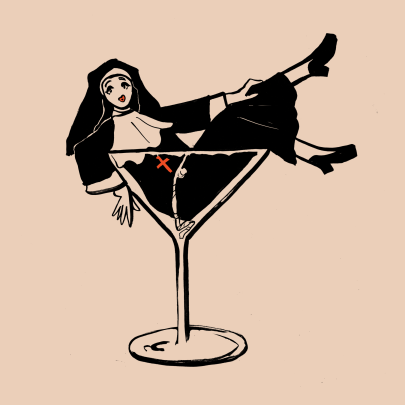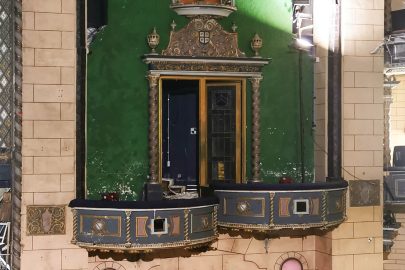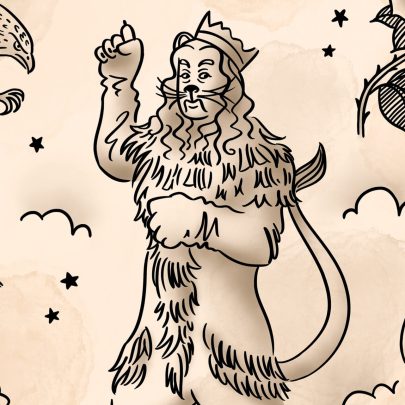Nov 3, 2014 Theatre
Auckland Theatre Company
Q Theatre
November 1, 2014
As they look out at thousands of screaming fans, there have been a few singers who fancied themselves as messianic. Some have even indulged a “bigger than Jesus” ego. The title song of Jesus Christ Superstar speculates that if Jesus had come today he could have “reached a whole nation, Israel in 4BC had no mass communication”. Director Oliver Driver reckons Jesus would have to be a rock star today to preach his message (though Jesus has left his run a little late if reports that Taylor Swift’s new album will be the last platinum album turn out to be true). And so that’s what we get. Jesus the rock god has always been implicit in the show’s music, but the traditional iconography of Jesus has usually been respected in stagings of Superstar. Not Driver.
But first, a bible studies lesson about the good Lord: Lord Andrew Lloyd Webber. It’s 1970 and Lloyd Webber and lyricist Tim Rice’s concept album of Superstar is a phenomenon. It’s an angsty, urgent rock opera, the work of two young men before they knew any better. When it’s staged a year later it’s met with Christian outrage and protests, but since then it’s been broadly accepted by believers and non-believers alike.
There was a 1973 film, heavily anachronistic, which began with the cast arriving in the desert by bus, and the show has had a recent afterlife as a touring arena spectacular that takes inspiration from the Occupy movement, starring comedian/composer Tim Minchin as Judas and Spice Girl Mel C as Mary Magdalene.
You get the impression Driver wouldn’t mind an arena. This show wants to look and sound big. Our first image is Laughton Kora’s Judas, his face in shadow, rocking out on guitar. They say Superstar has the largest cast to perform at Q, but with the seating blocks packed in the round, it’s also got the tiniest stage. John Verryt’s solution is to erect scaffolding around the entirety of Q’s Rangatira auditorium, to make use of all three levels.
Kora struts and frets up and down most of the ramps to get face time with each section of the audience. He’s the disgruntled guitarist who doesn’t like the new direction the band’s going. While the blocking works against its coherence, Kora sings the hell out of “Heaven on Their Minds” and the spine tingles begin early.
In the height of a volatile political situation, Jesus’ band has arrived in Jerusalem for a sold-out concert at the Temple Arena. Backstage, disciples and groupies are having a rowdy party. Kristian Lavercombe’s Jesus wears a “Death Metal Lives” T-shirt, a burgundy leather vest, red velvet cowboy shoes, and his hair short. He’s like a cross between Axl Rose and Green Day’s Billie Joe Armstrong, with the odd touch of Riff Raff that Lavercombe hasn’t quite managed to shake off after touring in Rocky Horror for two years. One of Jesus’s first actions is to bend Mary Magdalene (Julia Deans) over a table, sexual and secular.
Jesus and his followers are up against the high priests who want to shut down their act. Like something out of a dystopian nightmare, opera singer Richard Green gives Caiaphus the ideal booming bass gravitas. Shane Bosher as Annas is near breaking point at the top of his register, and Colleen Davis and Gareth Williams are Nosferatu-inspired vampiric priests, and it looks like they’ve used the left-over bleach from Davis’ Mama Morton role from last year’s Chicago. When they make the sign of the cross, it’s a creepy and cultish activity. We’ll later meet Andrew Grainger’s Pontius Pilate, whose military garb is suggestive of an American occupier, though the production chooses not to play in that particular quagmire.
Unitec acting students become screaming fanboys and fangirls as they wait for Jesus to take the stage, “Touch me, touch me Jesus!” Former Midnight Youth frontman Jeremy Redmore as Simon Zealotes becomes the warmup act, and though the atmosphere is pumping, the theatre’s size makes it feel more like a boisterous Christian youth group than a rock concert. The last supper becomes an after-party yum cha with drunken sing-alongs, though ethnic stereotyping of the staff was an ill-thought decision, distracting and undercutting the scene’s dramatic stakes.
Against this mash the stories of the show’s holy trinity, Jesus, Judas and Mary, gets a bit lost. While Jesus is like the frontman who’s increasingly going off the set-list, the religious calling is a bit obscure. When he rails against the grubby dealings of the priests in the temple, I wonder why this Jesus cares (has he seen how much Vector concerts make off merchandise?).
“Gethsemane”, the musical showstopper for the actor playing Jesus, where he questions God’s plan for him, begins in questionably style as a tantrum, Lavercombe kneeling and slapping the floor. In the second half of the song, though, he rises in defiance, reaches full vocal power and brings the house down.
Potential character beats for Judas are skipped over, and there’s no build up for Judas before the priests arrive to discuss handing over Jesus. Julia Deans makes exquisite work of the ballad “I Don’t Know How To Love Him”. Her slowed-down interpretation channels her recent work singing Joni Mitchell with some Adele-like power, and it’s a pleasure seeing her on the musical theatre stage.
Musical director Leon Radojkovic and the band are also star players in this production. Those familiar with Webber’s tunes will pick up new arrangements which add further edge and energy. The already quite frenetic “What’s the Buzz”, which introduces the disciples, is kicked up a further notch with a punk vibe to match Elizabeth Whiting’s garments-with-attitude. “Hosanna” becomes a protest anthem with a “Kids in America” vibe.
The role of King Herod is often reserved for a comic star turn (Rik Mayall is a bright spot in a 2000 filmed version) and I was salivating as to what Supercity’s Madeleine Sami would do with the one-scene wonder. Even so, I was not prepared for her mad outrageousness. Claiming Herod as a despotic, Borat-like ruler with a gold cloak, beer belly and dancing malnourished slaves, she wins entrance AND exit of the year and creates havoc in between as she goads “Jemus” to “walk across my swimming pool”. Movement director Lara Fischel-Chisholm has particular fun with the Unitec students here. I want to go back and see Sami’s scene again, right now.
From Herod onwards Driver gets the ending of the show absolutely right. The guitar hero pretensions are dropped and the show enters surrealist territory as Jesus gets a Clockwork Orange treatment of torture and humiliation. The band of Jesus supporters is whittled down to the final faithful few. Suicidal and desperate, Judas is tormented by a chorus of sinister lambs. And then there’s the cross. They nail it.
One thing does bother me. The title song, where Judas returns to ask “Who are you? What have you sacrificed?”, is moved to after the crucifixion so it effectively becomes the curtain call. When Judas sings “I only want to know”, I’m not convinced that he actually does. And that is this show’s big problem. In the musical, Judas’ dilemma can have urgency and be a big focus of the show. Not here; his emotional journey gets short-shrift. The musical also asks questions about Jesus and attempts to separate the myth from the man. Again, not here. Driver doesn’t seem as interested in Jesus’ humanity, and has sacrificed story for spectacle.
But what a spectacle. You’ll cheer as the final song becomes a glorious celebration of the show’s brilliant excesses, as priests, Herod, Romans and all dance to the Webber standard. Jesus Christ Superstar is a glorious end-of-year splurge and an almightily audacious rock-opera experience.
To December 14. qtheatre.co.nz
Photo of Julia Deans as Mary and Kristian Lavercombe as Jesus by Michael Smith.





